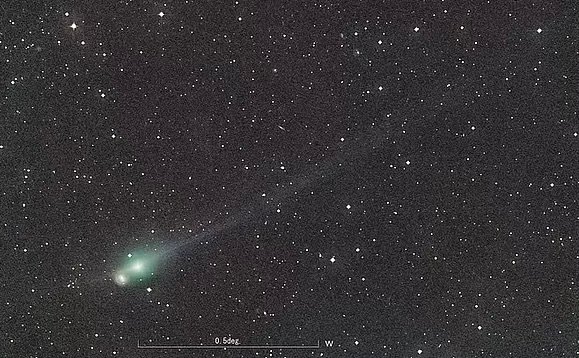The United Nations has announced that Earth’s planetary defense community will undertake a coordinated observation campaign as the interstellar comet 3I/ATLAS makes its passage through the solar system. The effort, led by the International Asteroid Warning Network (IAWN), begins on November 27 and will continue for roughly two months.
According to the UN, the comet poses no danger to Earth. However, officials emphasize that its unusual origin—approaching from beyond our solar system—makes it an ideal target for testing global tracking capabilities. Because comets appear as diffuse, glowing objects rather than fixed points of light, they present unique challenges for astronomers attempting to measure their positions with precision.
IAWN has been preparing for this campaign since last year. “We had planned a 2025 fall exercise specifically to refine techniques for monitoring comets,” the UN explained, noting that this will be the network’s eighth observational drill since 2017.
Discovered in July 2025, 3I/ATLAS is only the third known interstellar comet to enter our solar system, after 2I/Borisov in 2019 and the controversial object 1I/‘Oumuamua in 2017. Its arrival quickly captured worldwide attention—not only among professional astronomers but also across social media. Speculation intensified when a handful of researchers and even a U.S. lawmaker suggested the object could be a spacecraft of extraterrestrial origin.
NASA quickly moved to counter those claims. After releasing detailed images taken by three Mars-orbiting spacecraft that passed within 18 million miles of 3I/ATLAS, the agency confirmed that the object shows defining features of a natural comet. “We are eager to find life beyond Earth—but this is not it. 3I/ATLAS behaves exactly like a comet,” said Amit Kshatriya, a senior NASA official.
Despite the scientific consensus, a small number of researchers—including Harvard professor Avi Loeb—have continued to explore alternative interpretations. Loeb recently shared new amateur images taken between November 22 and 24, which show the comet’s bright coma and a thin, 600,000-mile “anti-tail.” This unusual tail, which points toward the Sun rather than away from it, is caused by the angle of scattered dust particles reflecting sunlight.
Remarkably, many of the most detailed images of 3I/ATLAS have come not from space agencies but from hobbyist astronomers. Observers in Japan, Spain, Chile, and Canada captured strikingly clear photos using telescopes commonly found in backyard astronomy setups. One widely shared image, taken by Japanese skywatcher Mitsunori Tsumura with a 20-inch telescope, highlights the comet’s vivid green glow. Another sharp image made in Spain with a 12-inch reflector shows the object’s elongated profile with impressive clarity.
In Canada, astrophotographer Paul Craggs obtained one of the clearest images yet as he traveled across North America, revealing the comet’s current structure and dust distribution.
As the observation campaign officially begins, scientists hope the data collected will improve modeling techniques for tracking non-asteroid objects—an essential capability for future planetary defense efforts. Meanwhile, 3I/ATLAS continues its journey through the inner solar system, offering astronomers and enthusiasts alike a rare chance to witness an interstellar visitor up close.
Source:Africa Publicity








